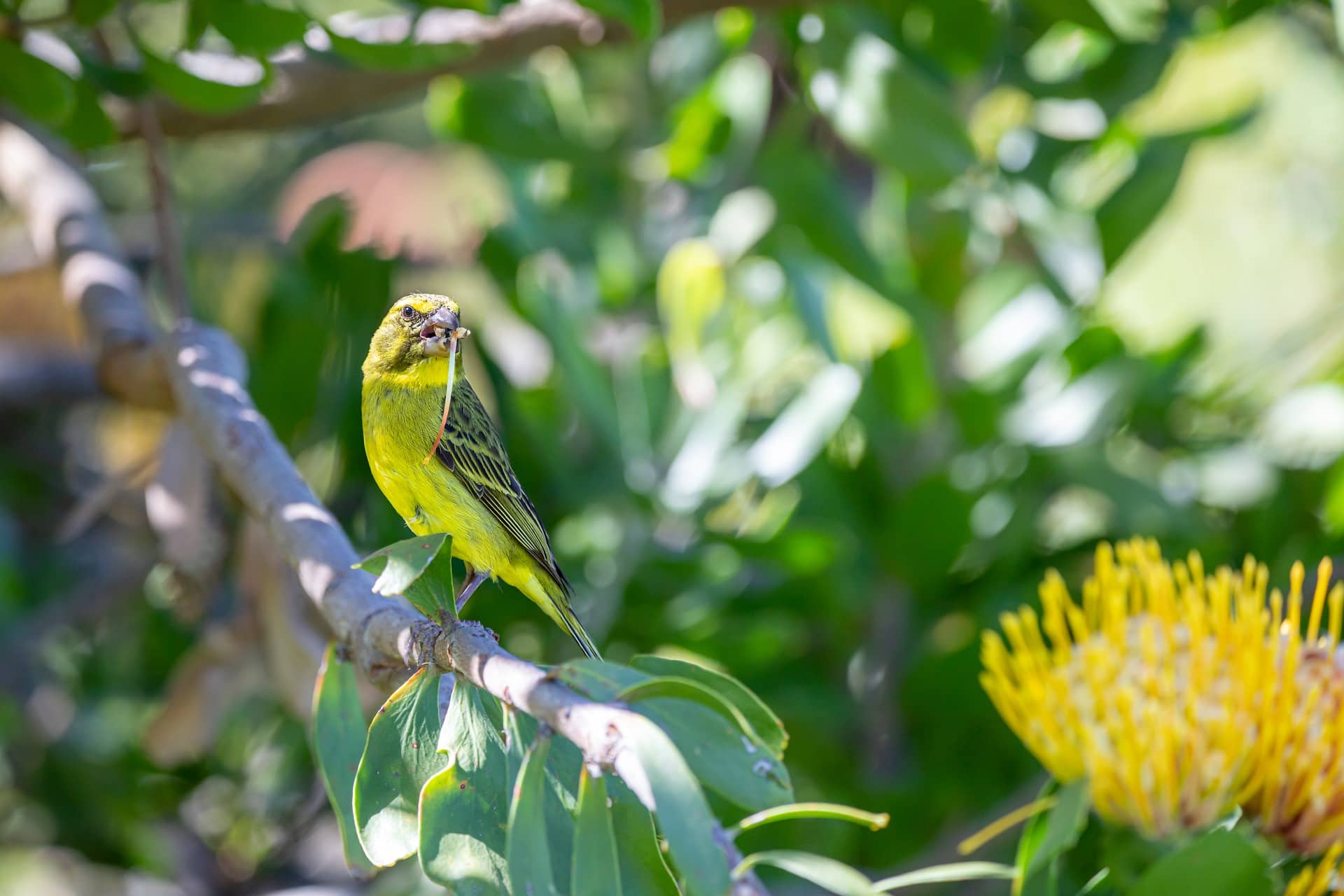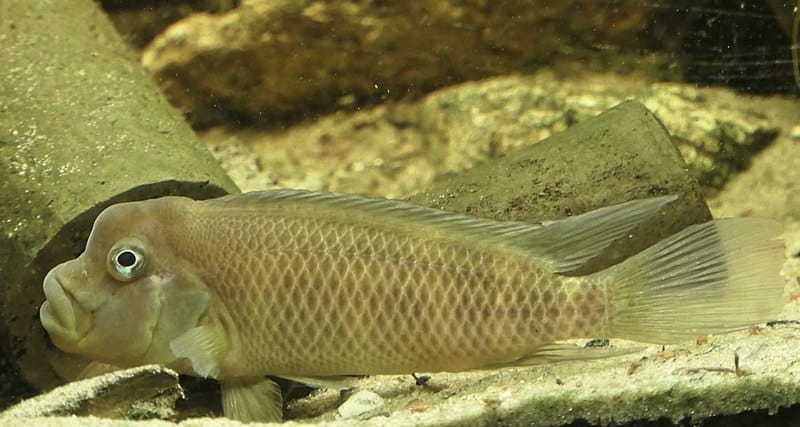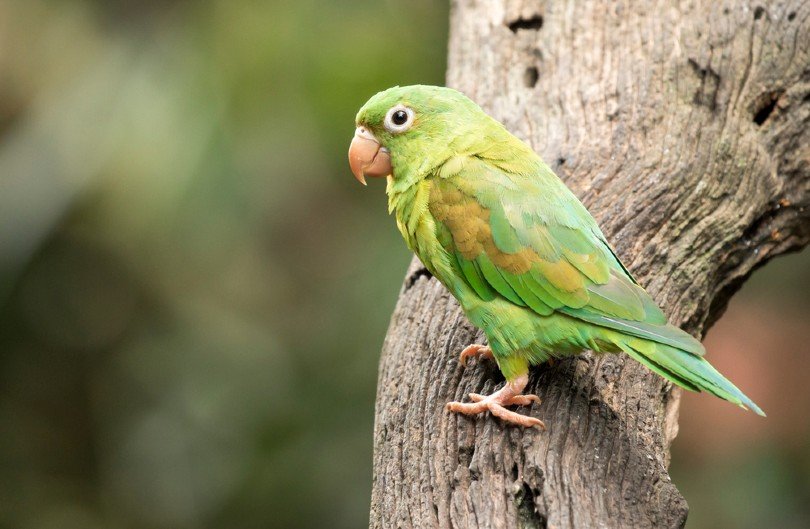Click to Skip Ahead
The Canary-Winged Parakeet is also called the White-Winged Parakeet, and it’s a small parakeet that makes a great pet. It typically has green feathers with a light red beak. If you are thinking of getting one of these birds for your home but would like to learn more about it first, keep reading as we look at its natural habitat, temperament, housing requirements, and more to help you make an educated decision.

Species Overview
| Common Names: | Canary-Winged Parakeet, White-Winged Parakeet Chevron-Winged Parakeet |
| Scientific Name: | Brotogeris versicolurus |
| Adult Size: | 8–9 inches |
| Life Expectancy: | 15 years |
Origin and History
You can find the Canary-Winged Parakeet in its natural habitat by visiting the Amazon river basin, from Colombia to Brazil. The wild birds prefer cut trees and forest clearings for their homes over thick forests. They nest in tree holes and might even take over termite tunnels if it’s convenient. They also like plenty of water, so they tend to stay close to a river or lake.
Temperament
Most owners describe their Canary-Winged Parakeet as extremely affectionate. They enjoy spending plenty of time with you outside the cage and will often ride on your shoulder and get tangled in your hair. It usually remains a tolerable volume unless it is calling you and growing impatient, which is when it can let out some loud squawks. These birds are great climbers and puzzle solvers that love to whistle.
- Affectionate
- Small size
- Not too noisy
- Intelligent
- Require plenty of attention
- Rarer than some other parakeets
Speech & Vocalizations
The Canary-Winged Parakeet loves whistling and will spend much of the day singing soft melodies that are quite enjoyable to listen to. Some birds can even mimic the flow of human speech. They don’t learn words as well as some other parakeets, but they will seem to speak in sentences. The effect is like a bird version of the teacher in “The Charlie Brown and Snoopy Show.” They make a screeching sound in the wild to call to other birds of their flock that are out of view, and your bird may use it to call to you if it feels it’s not getting enough attention.

Canary-Winged Parakeet Colors and Markings
Most of the Canary-Winged Parakeet’s body has green feathers, giving it an overall green appearance. But there is a yellow edge on the trailing feathers, and there are also white patches on the wings that are easier to notice when the bird is in flight. It has blue marks on its long pointy tail, brown eyes, and a tan beak. It usually grows to about 8 inches, but some birds can grow as large as 10 inches.
Caring for the Canary-Winged Parakeet
Caring for your Canary-Winged Parakeet is not that difficult. You will need a cage about 2 feet wide, 2 feet deep, and 2 feet high. A bigger cage is better, and we recommend getting the largest one you can afford that will fit in your home. There should be several perches in the cage because your bird likes to fly and hop from spot to spot. It will also need a food bowl, a water bowl, and plenty of toys to keep it busy while you are away at work or in another part of your home.
Common Health Problems
Your indoor Canary-Winged Parakeet is extremely healthy and is unlikely to require too many visits to the vet. In the wild, they are much more susceptible to bacteria and parasites that can cause a wide range of problems. However, as pets, the only real concern is keeping them out of drafts, which can cause colds, and too much direct sunlight, which can cause them to overheat. The only other problem they are susceptible to is a vitamin A deficiency resulting from not eating enough fruit.
Diet and Nutrition
Your Canary-Winged Parakeet will primarily eat a diet of commercial mixed seeds designed for Cockatiels and small parakeets. Your bird will also require plenty of fruits and vegetables to help it get the nutrients it needs to stay healthy, primarily vitamin A. You can even feed your pet branches, edible flowers, wheat germ, insects, and dried shrimp.
Exercise
If the cage is large enough and you put several perches inside, your bird will get much of the exercise it needs by hopping from perch to perch all day. However, allowing it a few hours outside the cage each day will help provide it with mental stimulation, and exploring with room to fly will help it burn off calories.
Where to Adopt or Buy a Canary-Winged Parakeet
Unfortunately, Canary-Winged Parakeets are not as popular as some other breeds, so they will be a little more challenging to find in your local pet store. We recommend starting at local animal shelters to see if someone has to give one up. Canary-Winged Parakeets can sometimes end up in shelters if the owner can no longer care for them. While it’s not easy to find one at the local pet store, but they may help you find a local breeder. Otherwise, you will need to look online to find a breeder. Online breeders usually charge between $400 and $800 for a Canary-Winged Parakeet.

Final Thoughts
The Canary-Winged Parakeet makes a great pet, but they can be a little difficult to find, as not many are available for sale. This bird is extremely friendly and will hitch a ride on your shoulder as you walk through the house. It’s a healthy breed with few health problems and a long lifespan that often stretches beyond 15 years.
See Also:
Featured Image Credit: Canary-winged Parakeet, Valerie Gebert, Flickr, Attribution CC 2.0










